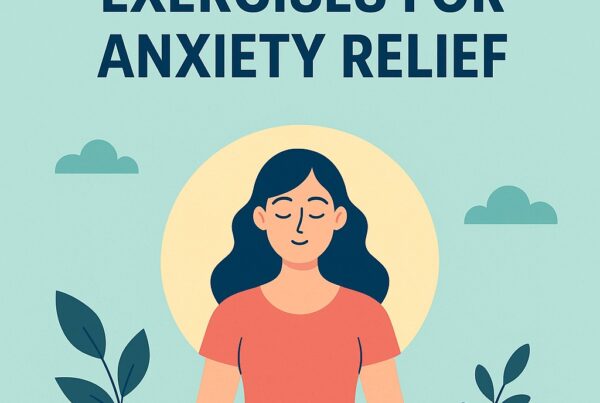Identifying Burned Out: Symptoms, Risk Factors, Prevention, and Treatment
Are you constantly exhausted, disengaged, or unproductive at work? Does it seem like no matter how much sleep you get or how many breaks you take, the fatigue won’t go away? You might be experiencing burnout. Burnout is a state of chronic stress that has become a prevalent issue in modern society, affecting millions worldwide who feel burned out. In this blog post, we will delve into the ins and outs of burnout, its symptoms, risk factors, and, most importantly, how to prevent and treat it to regain control of your well-being.
By understanding the causes and consequences of burnout, you can become better equipped to recognize the warning signs and take action to protect yourself and those around you from feeling burned out. Let’s embark on a journey to learn about burnout, its impact on our lives, and the strategies to overcome it.
Short Summary
- Burnout is a form of chronic stress caused by prolonged exposure to demanding situations, with far-reaching implications for health and work.
- Recognizing the risk factors contributing to burnout can help proactively reduce its impact and encourage a healthier lifestyle.
- Taking proactive measures such as self-care, resilience building, and seeking support from others is essential in treating burnout and promoting overall well-being.
Understanding Burnout: Definition and Impact

Burnout is a state of physical and emotional exhaustion caused by ongoing stress related to work or personal life demands. It’s a feeling of being drained, overwhelmed, and unable to meet our constant expectations, with mental exhaustion caused by these demands.
The impact of burnout is far-reaching and can have detrimental effects on physical and mental health, work quality, productivity, and overall well-being.
What is burnout?
At its core, burnout is a form of chronic stress that typically arises from prolonged exposure to demanding situations, such as excessive workload or lack of control in the workplace. Job burnout, a specific form of burnout, is characterized by physical, mental, and emotional exhaustion resulting from excessive and prolonged demands in the workplace or personal life. These high-pressure environments can lead to various types of burnout, such as overload burnout, caused by the pursuit of success, financial security, or recognition, and under-challenged burnout, resulting from a lack of stimulating work and disengagement.
The characteristics associated with burnout include:
- Feelings of emptiness
- Mental exhaustion
- Lack of motivation
- Apathy
To overcome burnout, it’s essential to recognize the contributing factors, manage stress, and prioritize self-care.
The impact of burnout
Burnout can have a significant effect on both personal and professional life, health, and overall well-being. In the workplace, burnout can result in:
- Physical, mental, and emotional repercussions
- Influence on job performance and satisfaction
- Decreased motivation
- Strained interpersonal relationships
Financially, burnout is estimated to cost around $322 billion in employee turnover and almost $190 billion in healthcare costs annually. These alarming figures highlight the need for effective strategies to mitigate burnout, such as consuming foods rich in Omega-3 fatty acids, abstaining from nicotine, and consuming alcohol in moderation.
Recognizing Burnout Symptoms

Recognizing burnout symptoms early on is crucial for intervention and prevention. By being aware of the physical, mental, and emotional signs of burnout, you can take steps to undo the damage and seek support when necessary.
Identifying the warning signs of burnout can help you regain control of your life and ensure long-term well-being.
Physical symptoms
Physical symptoms of burnout may include fatigue, headaches, and changes in appetite or sleep patterns. These symptoms can greatly impact daily functioning, making it difficult to perform tasks efficiently and maintain a healthy lifestyle. By acknowledging these physical signs, you can take action to manage stress and prevent further decline in your well-being.
It’s important to listen to your body and recognize when to take a break or seek help. Ignoring these physical symptoms can exacerbate burnout and lead to more severe health problems.
Mental symptoms
Mental symptoms of burnout can include difficulty concentrating, feelings of incompetence, and cynicism towards work or personal life. These symptoms can negatively impact job performance, satisfaction, and motivation, making maintaining a healthy work-life balance challenging.
If you struggle with mental symptoms, it’s essential to acknowledge them and take steps to address the underlying issues. This may involve:
- Seeking professional help
- Implementing stress management techniques
- Making changes in your work environment to promote a more positive and supportive atmosphere.
Emotional symptoms
Emotional symptoms of burnout include irritability, frustration, and a sense of hopelessness or detachment. These feelings can create a negative cycle, leading to further stress and a decline in overall well-being.
AIt’sddressing these emotional symptoms by seeking support from friends, family, or professionals and implementing self-care practices to improve physical and emotional health is crucial. By managing these symptoms, you can regain control over your emotions and prevent burnout from taking a toll on your life.
Risk Factors for Burnout

Burnout risk factors can be categorized into work-related factors, lifestyle factors, and personality traits, all of which can contribute to burnout. By understanding these risk factors, you can take proactive measures to minimize their impact and promote a healthier, more balanced lifestyle.
It is important to recognize the signs of burnout and take steps to address them. This may be the case.
Work-related factors
Work-related factors contributing to burnout and work-related stress include excessive workload, little or no control, and poor workplace support or communication. Extended working hours and limited control over the work environment can lead to helplessness, frustration, and resentment. At the same time, inadequate workplace support or communication can result in isolation, lack of recognition, and reduced job satisfaction.
Addressing these work-related factors by implementing changes in the workplace, such as promoting a more supportive culture or setting realistic goals and expectations, can help prevent burnout and improve overall well-being.
Lifestyle factors
Lifestyle factors that contribute to burnout include:
- Poor sleep hygiene
- Inadequate nutrition
- Insufficient social support
- Working without time off or breaks
- Taking on too many responsibilities
- Engaging in unhealthy habits
All of these factors can contribute to burnout.
Making lifestyle changes, such as prioritizing sleep, maintaining a healthy diet, and fostering supportive relationships, can help prevent burnout and promote overall well-being.
Personality traits
Certain personality traits, such as perfectionism, pessimism, and high-stress levels, can increase the risk of burnout. These traits can make individuals more susceptible to chronic stress’s negative effects and may exacerbate burnout’s consequences.
By recognizing these personality traits and working to develop healthier coping strategies, individuals can reduce their risk of burnout and maintain a more balanced and resilient approach to stress.
Preventing Burnout: Strategies and Tips

Preventing burnout involves implementing strategies and tips to establish a work-life balance, manage stress effectively, and seek professional help when needed. Taking proactive measures to address the various risk factors associated with burnout can safeguard your well-being and ensure long-term success and happiness.
Creating a healthy work-life balance is essential for avoiding burnout. This means setting boundaries.
Establishing work-life balance
Establishing work-life balance involves:
- Setting boundaries between professional and personal life
- Taking breaks
- Prioritizing personal well-being
- Creating a realistic schedule
- Practicing time management
- Enjoying your work
These steps can help promote a healthy work-life balance.
Maintaining a clear distinction between work and personal life and focusing on activities that bring joy and relaxation can effectively prevent burnout and build a more fulfilling and balanced lifestyle.
Managing stress effectively
Managing stress effectively involves practicing relaxation techniques, such as yoga, meditation, and deep breathing, engaging in regular physical activity, and maintaining a healthy diet. These strategies can help activate the body’s relaxation response, counteracting the negative effects of chronic stress and preventing burnout.
Incorporating these stress management techniques into your daily routine can build resilience and maintain a more balanced and positive outlook.
Seeking professional help

Seeking professional help, such as therapy or counselling, can provide additional support and guidance in preventing burnout. Professionals can offer:
- Resources and tools to help individuals develop healthier coping strategies
- Address underlying issues that may contribute to burnout
- Build a more resilient approach to stress
By reaching out for help and utilizing available mental health resources, you can ensure a well-rounded approach to preventing burnout and maintaining long-term well-being.
Treating Burnout: Recovery and Support

Treating burnout requires a combination of self-care, building resilience, and seeking support from others to promote recovery and long-term well-being. By addressing the various aspects of burnout and implementing a comprehensive treatment plan, you can regain control of your life and prevent future burnout episodes.
Self-care is an important part of burnout treatment. This includes activities such as getting a haircut.
Self-care and lifestyle changes
Self-care and lifestyle changes are essential in treating burnout. Prioritizing sleep, engaging in hobbies, and practicing mindfulness techniques can help improve mental and emotional well-being.
By making these positive changes, you can effectively address the symptoms of burnout and promote a more balanced and fulfilling lifestyle.
Building resilience
Building resilience involves developing coping strategies, setting realistic goals, and learning to accept change. By cultivating resilience, you can better manage stress and prevent burnout in the long run.
Incorporating deep breathing, meditation, and physical exercise can help improve mood and increase resilience.
Seeking support from others
Seeking support from others, such as friends, family, or coworkers, can provide emotional and practical assistance during recovery. By reaching out for help and sharing your experiences, you can build a strong support network that can aid in overcoming burnout and maintaining long-term well-being.
A strong support system can be invaluable in times of stress and difficulty. It can provide.
Summary
Burnout is pervasive in today’s fast-paced world, affecting millions worldwide. Recognizing the symptoms, understanding the risk factors, and implementing strategies for prevention and treatment are essential to safeguarding your well-being and ensuring long-term success and happiness. By addressing burnout, you can regain control of your life, build resilience, and maintain a healthy work-life balance.
Remember, overcoming burnout begins with acknowledging the issue and taking action. With the right support, self-care practices, and resilience-building techniques, you can triumph over burnout and create a more fulfilling, balanced, and happy life.
Frequently Asked Questions
What are the symptoms of being burnt out?
Burnout is characterized by exhaustion, frustration and decreased motivation. Common signs of burnout include fatigue, irritability, difficulty concentrating, sleeping problems, loss of interest in work, and increased absences.
Is it burnt out or burned out?
Both “burned” and “burnt” are correct forms of the verb burn, with “burned” used in US English for both past tense verb and adjective sense and “burnt” commonly used in UK English for both uses.
However, “burnt” typically suggests that the intensity has passed and no additional burning is possible.
How do you fix burnout?
Recovering from burnout can be achieved by getting professional help, telling people what you need, practicing self-compassion, monitoring your stress levels, journaling, trying different stress-management techniques, setting boundaries, evaluating your options, seeking support, engaging in relaxing activities, exercising, getting enough sleep and practicing mindfulness.
Professional help can include talking to a therapist or counsellor, who can help you identify the underlying causes of your burnout and develop strategies to manage it. Telling people what you need can help you get the support you need to recover. Practicing self-compassion can help you be kinder to yourself and reduce feelings of guilt and shame. Monitoring your stress levels can help you recognize when you are becoming overwhelmed.
How do you fix burnout?
To fix burnout, it is important to take time off, replenish physical and emotional energy, evaluate burnout, identify and address the source, engage in activities that promote relaxation, exercise and mindfulness, and seek professional help as needed.
Taking time off is the first step to recovery. It is important to take a break from the activities causing burnout and focus on self-care. This can include getting enough sleep, eating healthy meals, and engaging in activities that promote relaxation and mindfulness.
Evaluating the level of burnout.
What is the difference between stress and burnout?
Stress is a normal part of life, but if it persists, it can eventually lead to burnout – prolonged stress caused by challenging demands in work or personal life. Burnout can have serious consequences, such as physical and mental exhaustion, decreased productivity, and depression. It is important to recognize the signs of burnout and take steps to prevent it. It takes regular breaks, sets realistic goals, and engages in enjoyable activities.



